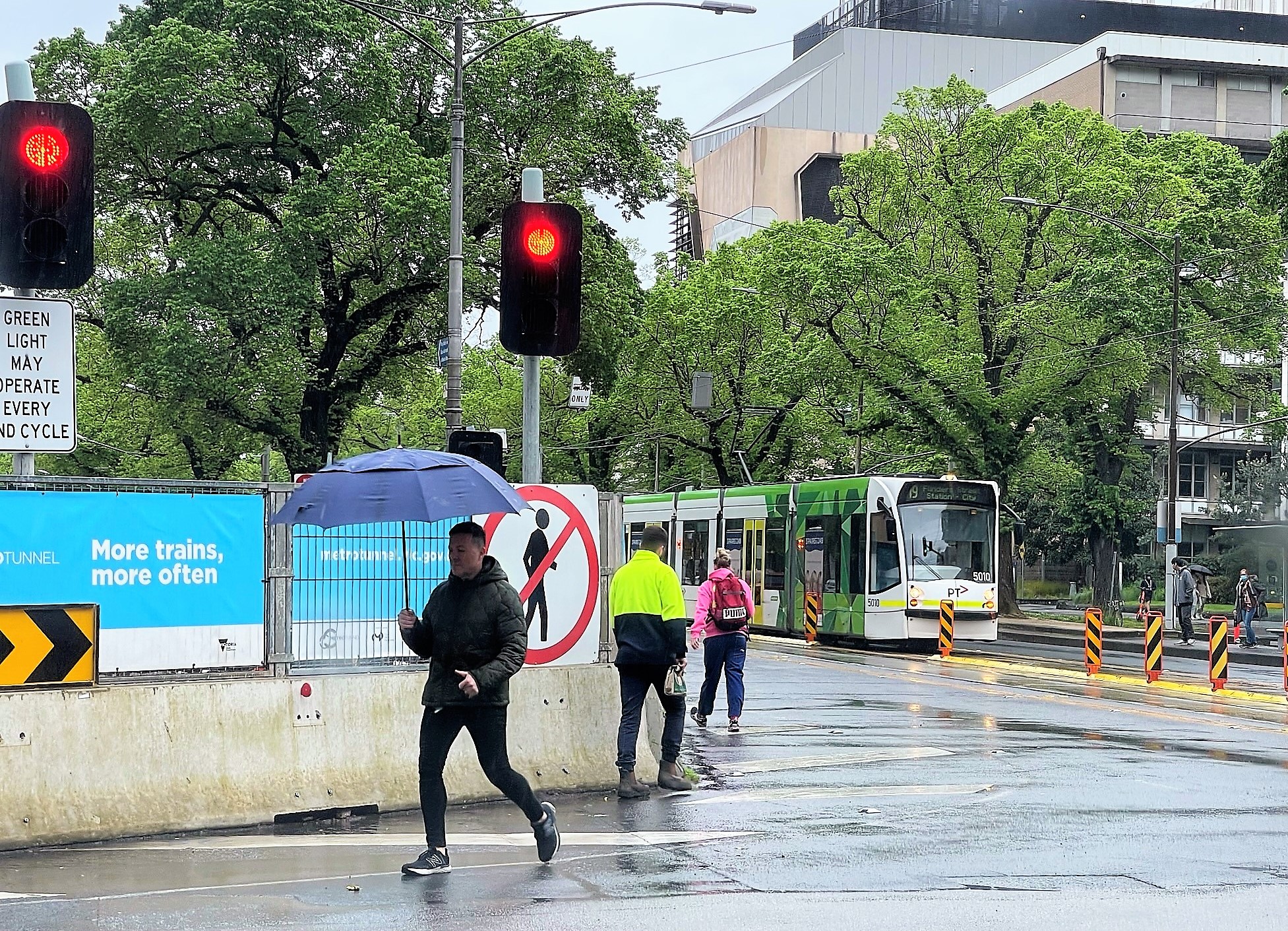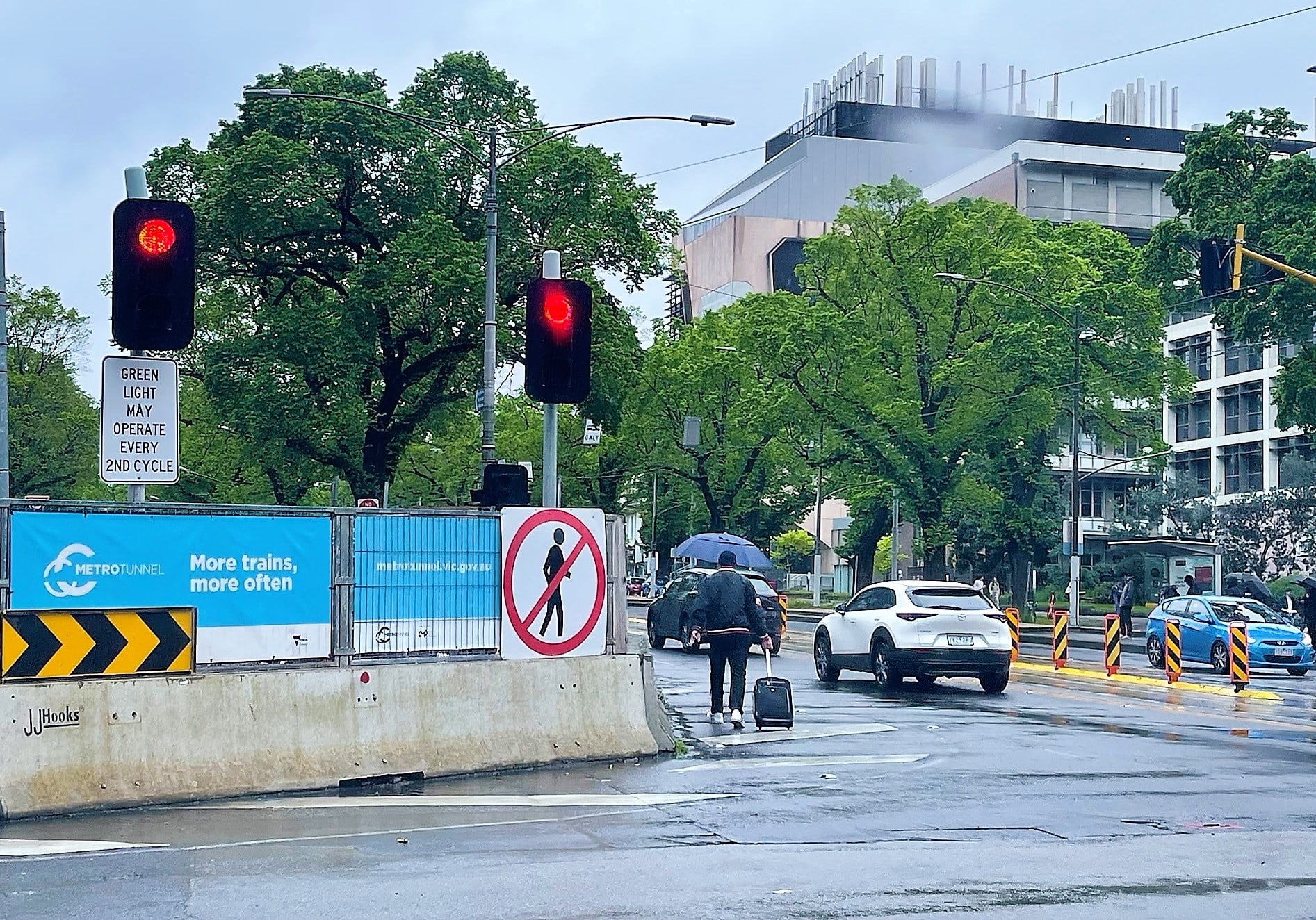


It doesn’t matter how big you make the sign – pedestrians will take the quickest route to their destination.
Delay is linked closely with pedestrians’ desire to take risks. Pedestrians will generally try to shorten distances and reduce waiting times, often ignoring designated crossings points, warning and regulatory signs; in ways that increase risk.
A literature review of factors influencing pedestrian safety (Martin 2006) shows that pedestrians organise their crossing location and timing to minimise walking distance and delay. It also found that in most situations, only 27% of pedestrians will deviate off their desire line when they can continue on the quickest route (even if that route involves more risk).
And how long will a pedestrian wait before taking crossing into their own hands? 21 – 28 seconds appears to be the average before a feeling of impatience is reported, and not long after results in the pedestrian taking the crossing task into their own hands.
So what should we do with this information?:
- Put pedestrian crossing points on pedestrian desire lines
- Don’t block pedestrian paths and pedestrian desire lines
- Divert vehicles, not pedestrians
- Provide pedestrian priority
- Slow vehicles where there are pedestrians
- Consider the fundamentals of pedestrian behaviour before resorting to banning pedestrians from an area.
Research reference: Martin A, Factors influencing pedestrian safety: a literature review, TRL 2006
